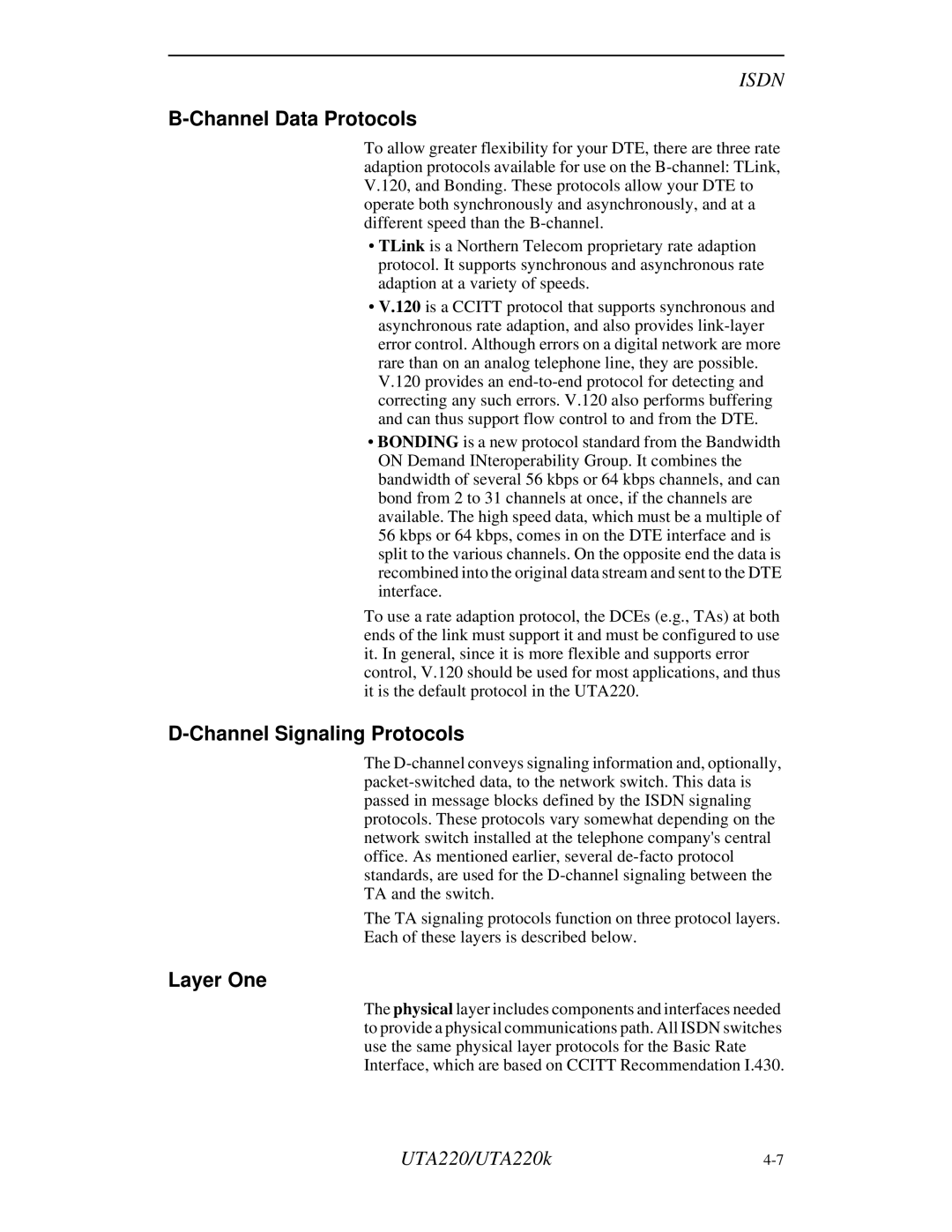ISDN
B-Channel Data Protocols
To allow greater flexibility for your DTE, there are three rate adaption protocols available for use on the
•TLink is a Northern Telecom proprietary rate adaption protocol. It supports synchronous and asynchronous rate adaption at a variety of speeds.
•V.120 is a CCITT protocol that supports synchronous and asynchronous rate adaption, and also provides
•BONDING is a new protocol standard from the Bandwidth ON Demand INteroperability Group. It combines the bandwidth of several 56 kbps or 64 kbps channels, and can bond from 2 to 31 channels at once, if the channels are available. The high speed data, which must be a multiple of 56 kbps or 64 kbps, comes in on the DTE interface and is split to the various channels. On the opposite end the data is recombined into the original data stream and sent to the DTE interface.
To use a rate adaption protocol, the DCEs (e.g., TAs) at both ends of the link must support it and must be configured to use it. In general, since it is more flexible and supports error control, V.120 should be used for most applications, and thus it is the default protocol in the UTA220.
D-Channel Signaling Protocols
The
The TA signaling protocols function on three protocol layers.
Each of these layers is described below.
Layer One
The physical layer includes components and interfaces needed to provide a physical communications path. All ISDN switches use the same physical layer protocols for the Basic Rate Interface, which are based on CCITT Recommendation I.430.
UTA220/UTA220k |
